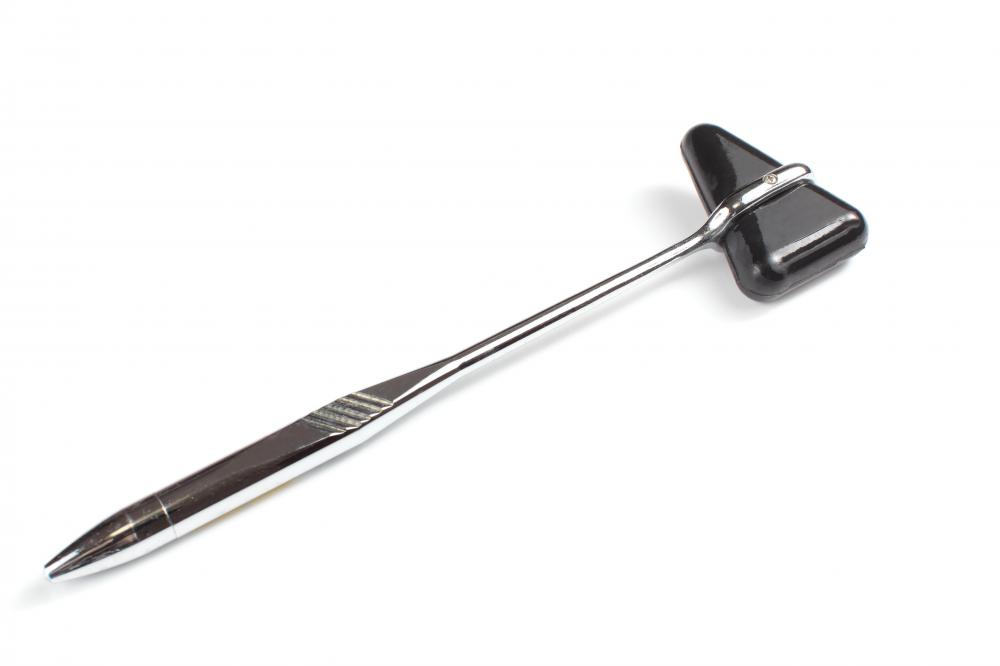At WiseGEEK, we're committed to delivering accurate, trustworthy information. Our expert-authored content is rigorously fact-checked and sourced from credible authorities. Discover how we uphold the highest standards in providing you with reliable knowledge.
What is a Patellar Ligament?
The patellar ligament, also known as the anterior ligament or the patellar tendon, is tissue that connects the tibia, or shin, and the patella, or kneecap. Following continuously into the quadriceps tendon above it, the patellar ligament is involved in straightening of the leg by the quadriceps muscle group in the front of the thigh. This is necessary for activities such as jumping, kicking, and pedaling.
Tapping the patellar ligament with a reflex hammer normally results in the patellar reflex, more commonly known as the knee-jerk. The patellar reflex is a spinal reflex in which the neural impulses involved bypass the brain completely resulting in a much faster response. This is what allows walking in a relatively fluid and continuous motion without consciously having to think about each step. Stimulation of the patellar reflex may be used to investigate potential neurological disorders. Slow or absent knee-jerk response to stimulation of the patellar ligament may indicate a problem with any of the parts of the body involved in the neural circuit for this reflex.

Patellar tendinitis, also known as jumper’s knee, is a painful and progressive injury of the patellar ligament characterized by micro-tears and collagen degeneration due to stresses and strains in the knee. This condition is most common among athletes engaged in sports that involve heavy, repeated, or sudden loading of the ligament such as running, jumping, or rapid changes in direction. Major symptoms of patellar tendinitis are pain and sometimes swelling below the kneecap. Such pain may be so intense as to disrupt sleep.

As patellar tendinitis may be aggravated by physical activities such as walking, running and squatting, treatment usually involves resting and immobilizing the knee to prevent further damage. Cold therapy such as application of an ice pack is also usually prescribed to reduce inflammation. Patellar rupture may be a complication of patellar tendinitis in extreme cases. Major medical intervention such as surgery followed by extensive physical therapy may be necessary when a patellar rupture occurs. Surgical procedures may be performed to increase blood flow to the affected area for faster healing, to remove damaged tissue, and to restructure and reattach the ligament to the surface of the bone.

Exercises that strengthen the quadriceps muscle group and other muscles around the knee may help prevent injury of the patellar ligament. Increasing the capacity of these muscles to bear more load helps reduce damaging excessive loading of the patellar ligament. Orthotic equipment such as arch supports to correct foot misalignment may also be beneficial in preventing further damage of the patellar ligament.
AS FEATURED ON:
AS FEATURED ON:















Discuss this Article
Post your comments